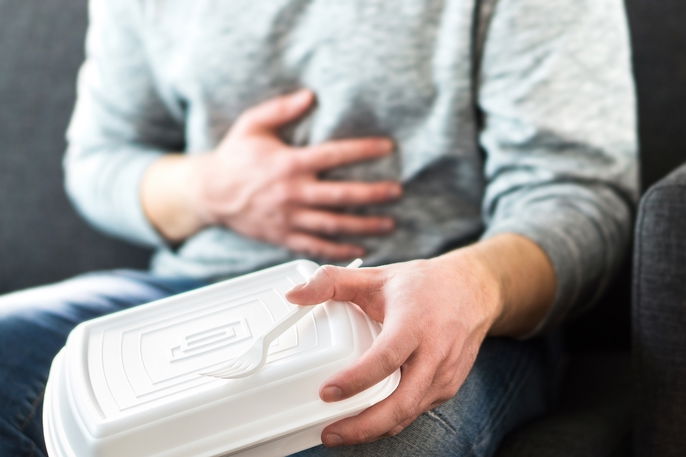What is it:
Salmonella is a type of bacteria that can be transmitted through foods that are contaminated the animal feces. You can become infected with salmonella by eating an undercooked egg or if you do not adequately wash your hands prior to preparing food.
Symptoms of salmonella are similar to any other gastroenteritis infection. They include vomiting, intense diarrhea and fever. The only way to know if your symptoms are caused by salmonella is through laboratory exams, which look to isolate this bacteria in a vomit sample, stool sample, or food sample.
An intestinal infection caused by salmonella are strong and dangerous, as the bacteria can spread to other organs. Therefore you should go to the hospital or see your family doctor immediately if you suspect you are infected.

Main symptoms
The pain symptoms of a salmonella infection are:
- Intense diarrhea
- Nausea and vomiting
- Stomach ache
- General malaise
- You may have fever and chills
- You may notice blood in the stool
Although symptoms are more frequent in the first 48 hours, salmonella symptoms can emerge up to 10 days after eating contaminated food and can last for 5 to 7 days. Symptoms can vary in intensity, depending on how much contaminated food you ate or on the concentration of bacteria in the food.
How to know if it’s a salmonella infection
If you think you may have a salmonella infection, enter your symptoms below to assess your risk:
Confirming a diagnosis
The doctor who is most apt to diagnose a salmonella infection is a gastroenterologist.
Generally, the doctor will evaluate the patient by assessing the symptoms, however gastroenteritis caused by salmonella can only be done through a stool culture. A stool sample is collected and sent to the lab to identify any bacteria present.
In addition to stool testing, the doctor can also send a vomit sample if collection is possible. A food sample can also be sent to the lab for analysis. Identifying the bacteria causing the gastroenteritis can help to optimize the treatment, as the best antibiotic can be selected to get rid of the bacteria.
Causes of salmonella infection
Salmonella bacteria can be found in animals (like chickens, pigs, reptiles, amphibians, cows and even domestic animals like cats and dogs). Any food that is near these animals or that has come in contact with these animals’ feces can all transmit the virus to a human.
Salmonella contamination can occur after consuming contaminated food or water, like greens, eggs, fruit, non-pasteurized milk and meat. Meat and egg contamination most commonly occur when these foods are undercooked.
Treatment options
There is no specific treatment for salmonella, as the body is able to eliminate the bacteria through diarrhea and/or vomiting. Nonetheless, when there are major fluid losses, it is important to rest and to maintain your hydration status by drinking water, homemade saline solution, teas or natural fruit juices. You should also opt for light meals. Learn more about home remedies for food poisoning.
In more serious cases, when the bacteria spreads to other parts of the body, symptoms can be more intense. Antibiotics and even hospital admission may be necessary. For this reason, all suspected cases of salmonella should be assessed by a doctor.
How to prevent salmonella infections
Salmonella infections can be prevented by properly handling food. To avoid salmonella contamination, you should:
- Ensure your meat is well-cooked
- Wash your hands before handling or eating food
- Avoid salads and fruits with the peel from places with suspicious hygiene practices
- Wash your fruits and vegetables before handling and eating
Learn more about how to recognize food poisoning and how it is treated.






























